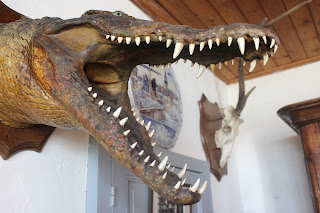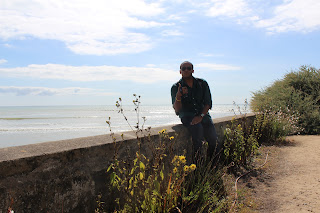Ruins that don’t “ruin” anything, aren’t really ruins at all. They are beautiful. Timeless, in the most destructive essence, which fatefully choose what buildings, rather what parts of buildings, would remain for us to see. l’Abbaye Maillezais stands before us, intact enough to let us imagine what life was like for benedictine monks in the 989 a.d.
The amazing landscape is the perfect sidekick. It’s the mesmerizing thing about monuments and beautiful landscapes. No matter what your mission is, tourism, photography, or videography, the job is much easier. The real work was done long before when abbey and cathedral were constructed. All we had to do was show up, smile and enjoy.
We are in the wonderful wilderness of Venise Verte, which a 38 mile wet marsh stream which is part of the second largest marshland in all of France. We split into two boats to conduct our adventure, and rowed our ways through green waters. Something about being in this wilderness is therapeutic. Cows graze in a nearby field. A light rain falls upon us, as our boat slowly moves up stream. The only sound is my oar touching down into the waters.
It was raining by the time we reached the abbey Nieul Sur l’Autize. Thankfully, it was much better preserved than the Maillezais, and we were able to stay inside for the majority of the tour. Maylis explains the abbey’s history while the interactive room lights up the past.
It only everything were this easy.
Water and green marsh splashes from the stroke of my oar directly until my lap. Sinyi laughs at me, while Yen-Jung yells: “Wrong way! You go the wrong way!”
“No! It’s your side. You’re not rowing hard enough!”
“In the early as the 4th century these monks built many abbeys on the banks and the islands of the Marais. Can you hear me!?” yells Maxime.
“Yes!” Sinyi responds.
“Ok good. Because I am going to quiz you later!”
There are videos, holograms and interactive videos throughout the tour to demonstrate what life was like for the monks of Nieul Sur l’Autize. I imagine their daily lives were much different from ours. Daily monk duties, and the occasional religious war threatening to destroy your home seems a bit stressful, but still, they were people. After a long day, and with a fresh falling rain, there is only one thing to do. Sleep. I like to think they thought the same.
















































